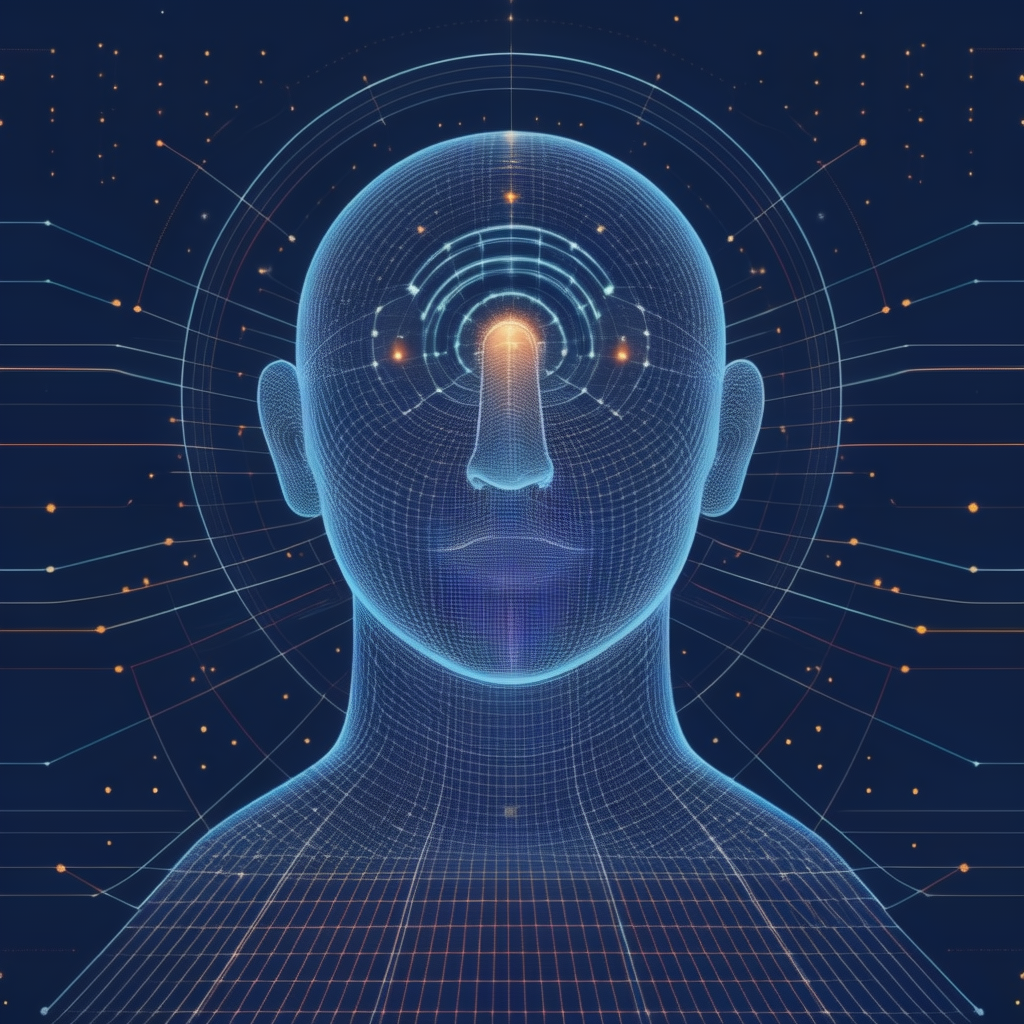Introduction:
The human brain, a marvel of complexity, orchestrates an intricate symphony of activity through neural networks and brain waves. This blog post delves into the profound connections between brain wave functions, neural activity, and the diverse spectrum of human behaviors, exploring the depths of this symbiotic relationship.
1. Brain Waves: Rhythmic Pulsations of the Mind
Types of Brain Waves:
- Delta Waves: Associated with deep sleep and regeneration, delta waves play a crucial role in the restorative functions of the brain.
- Theta Waves: Present during light sleep and deep relaxation, theta waves are linked to creativity, meditation, and emotional processing.
- Alpha Waves: Occurring in states of relaxed alertness, alpha waves are associated with reduced stress and improved focus.
- Beta Waves: Predominant during wakefulness, beta waves are linked to active, analytical thought processes and concentration.
- Gamma Waves: The fastest brain waves, gamma waves are associated with heightened cognitive functioning, memory recall, and learning.
2. Neural Activity: Orchestrating the Symphony
Neurons and Synapses:
- Neurons: The fundamental units of the nervous system, neurons transmit electrical signals and communicate through synapses.
- Synapses: Junctions between neurons, synapses facilitate the transfer of information through neurotransmitters, influencing neural circuits and pathways.
Neural Networks:
- Cortical Networks: Distributed throughout the brain’s cortex, these networks govern higher cognitive functions, including perception, memory, and decision-making.
- Limbic System: Central to emotions and memory, the limbic system, comprising structures like the amygdala and hippocampus, influences behavioral responses.
3. Brain Waves and Cognitive States
Sleep and Rest:
- Delta and Theta Waves: Deep sleep stages are characterized by delta waves, promoting physical restoration. Theta waves during lighter sleep stages contribute to emotional processing and memory consolidation.
Wakefulness and Alertness:
- Alpha and Beta Waves: Alpha waves dominate during relaxed wakefulness, promoting a state of calm focus. Beta waves, associated with active thought processes, prevail during intense mental activities.
Cognitive Performance:
- Gamma Waves: Enhanced gamma wave activity is linked to heightened cognitive performance, memory recall, and problem-solving abilities.
4. Emotional Regulation: The Limbic Influence
Amygdala and Emotions:
- Fear Response: The amygdala, a key limbic structure, triggers the fear response through neural pathways, influencing behavioral reactions.
Hippocampus and Memory:
- Memory Formation: The hippocampus plays a crucial role in memory formation, with theta waves during REM sleep aiding in memory consolidation.
5. Activities and Neural Patterns
Meditation and Mindfulness:
- Theta and Alpha Waves: Meditation induces theta and alpha wave patterns, fostering relaxation, improved attention, and emotional regulation.
Creativity and Flow States:
- Alpha and Theta Waves: Alpha and theta waves surge during creative endeavors, contributing to a state of flow characterized by heightened creativity and focus.
Stress and Cortisol Response:
- Beta Waves: Persistent beta wave dominance, indicative of stress, is associated with increased cortisol levels and negative impacts on mental well-being.
6. Neurofeedback and Cognitive Enhancement
Neurofeedback Training:
- Operant Conditioning: Neurofeedback involves operant conditioning of brain waves, allowing individuals to modulate their neural patterns consciously.
Cognitive Enhancement:
- Alpha and Theta Training: Neurofeedback targeting specific brain waves can enhance cognitive functions, including attention, memory, and emotional regulation.
7. Neural Oscillations: Synchronized Brain Activity
Frequency Bands:
- Theta-Gamma Coupling: Theta-gamma coupling involves synchronization between theta and gamma waves, a phenomenon linked to memory retrieval and integration of information.
- Cross-Frequency Coupling: Neural oscillations exhibit cross-frequency coupling, where different frequency bands interact to support various cognitive processes, such as attention and decision-making.
Entrainment:
- External Stimuli Entrainment: External stimuli, such as rhythmic auditory or visual cues, can entrain neural oscillations. This phenomenon is utilized in therapies and interventions to modulate brain activity.
8. Brain Connectivity: Wiring the Cognitive Landscape
Functional Connectivity:
- Default Mode Network (DMN): The DMN, active during rest and mind-wandering, plays a role in self-referential thinking and introspection.
- Task-Positive Network (TPN): TPN engages during goal-oriented tasks, demonstrating the dynamic interplay between different functional networks.
Structural Connectivity:
- White Matter Pathways: Structural connectivity, mediated by white matter pathways, forms the anatomical foundation for efficient neural communication.
9. Brain Plasticity: Adapting and Evolving
Synaptic Plasticity:
- Long-Term Potentiation (LTP): LTP, a key mechanism in learning and memory, involves the strengthening of synaptic connections through repeated neural activation.
- Long-Term Depression (LTD): Conversely, LTD weakens synaptic connections, contributing to synaptic plasticity and adaptation.
Experience-Dependent Plasticity:
- Neuroplastic Changes: Experience-driven neural activity induces neuroplastic changes, shaping the brain’s structural and functional connectivity based on environmental stimuli.
10. Brain-Machine Interfaces: Merging Minds with Technology
Direct Neural Interfaces:
- Electroencephalography (EEG): EEG-based brain-machine interfaces decode neural activity, enabling real-time control of external devices through brain signals.
- Invasive Interfaces: Invasive interfaces, such as neural implants, hold promise for precise neural control and communication.
11. Sleep Architecture: Unveiling the Nightly Symphony
Sleep Stages:
- Rapid Eye Movement (REM) Sleep: REM sleep, characterized by vivid dreaming, involves heightened neural activity and plays a role in emotional regulation and memory consolidation.
- Slow-Wave Sleep (SWS): SWS is crucial for physical restoration, with delta waves dominating the sleep EEG.
12. Brainwave Entrainment: Harnessing Frequencies for Well-Being
Binaural Beats:
- Binaural Beat Effects: Auditory stimuli presenting slightly different frequencies to each ear can induce binaural beats, influencing brainwave patterns and potentially promoting relaxation or focus.
Isochronic Tones:
- Temporal Pulsing: Isochronic tones, characterized by distinct and evenly spaced pulses, are used in brainwave entrainment to guide the brain into specific frequency states.
13. Circadian Rhythms: The Daily Choreography
SCN and the Master Clock:
- Suprachiasmatic Nucleus (SCN): The SCN in the hypothalamus serves as the master clock, regulating circadian rhythms and influencing sleep-wake cycles.
Melatonin Production:
- Pineal Gland: Melatonin, a key regulator of sleep, is produced by the pineal gland in response to darkness, signaling the body to prepare for rest.
14. Cognitive Disorders and Neural Dysregulation
EEG Biomarkers:
- Alzheimer’s Disease: Aberrant EEG patterns, such as increased theta and decreased alpha power, serve as potential biomarkers for Alzheimer’s disease and other neurodegenerative disorders.
ADHD and Neural Oscillations:
- Theta/Beta Ratio: ADHD is associated with an elevated theta/beta ratio, highlighting the role of neural oscillations in attention regulation.
7. Brain Waves in Neurological Disorders
Alzheimer’s Disease:
- Theta and Delta Wave Patterns: Studies reveal altered theta and delta wave patterns in individuals with Alzheimer’s, shedding light on the potential use of brain waves as biomarkers for early detection.
Epilepsy:
- Aberrant Gamma Waves: Epileptic seizures are associated with abnormal gamma wave activity, leading to insights into the role of gamma waves in seizure generation and control.
Attention-Deficit/Hyperactivity Disorder (ADHD):
- Theta and Beta Wave Dynamics: ADHD is linked to deviations in theta and beta wave patterns, emphasizing the role of neural oscillations in attention regulation.
8. Brain Waves and Perception
Sensory Processing:
- Alpha Rhythms: Alpha rhythms modulate sensory processing, influencing the perception of visual and auditory stimuli. The suppression of alpha waves corresponds to heightened sensory awareness.
Multisensory Integration:
- Theta-Gamma Coupling: Theta-gamma coupling is crucial for integrating information from different senses, contributing to a cohesive perception of the environment.
9. Brain Waves and Motor Control
Motor Learning:
- Mu Rhythms: Mu rhythms, a type of sensorimotor rhythm, are involved in motor learning and execution. Their modulation reflects changes in the brain’s motor planning and execution processes.
Motor Disorders:
- Beta Wave Dysregulation: Disorders like Parkinson’s disease exhibit dysregulation in beta wave activity, emphasizing the role of beta oscillations in motor control and coordination.
10. Brain Waves in Social Cognition
Empathy and Mirror Neurons:
- Alpha and Beta Wave Correlates: Studies suggest that alpha and beta wave patterns are associated with empathic responses, potentially linked to the activation of mirror neurons during social interactions.
Theory of Mind:
- Theta Waves during Perspective-Taking: Theta wave activity increases during tasks requiring individuals to adopt the perspective of others, indicating a role in theory of mind processes.
11. Brain Waves and Hormonal Influence
Hormonal Regulation:
- Cortisol and Stress Response: Cortisol release, linked to stress, influences alpha and beta wave patterns, showcasing the bidirectional relationship between hormonal fluctuations and neural activity.
Sex Hormones and Cognitive Function:
- Estrogen and Memory: Estrogen levels influence theta wave dynamics, and fluctuations in sex hormones contribute to variations in cognitive functions such as memory across the menstrual cycle.
12. Brain Waves in the Developmental Context
Childhood Cognitive Development:
- Theta Wave Maturation: Theta wave patterns undergo maturation during childhood, coinciding with the development of memory and cognitive functions.
Adolescent Brain Development:
- Alpha and Beta Wave Changes: Adolescent brain development involves alterations in alpha and beta wave patterns, impacting executive functions and decision-making.
13. Brain Waves in Dreaming and REM Sleep
Dream States:
- Theta and Alpha Patterns: Dreaming, particularly during REM (Rapid Eye Movement) sleep, is associated with increased theta and alpha wave activity. These patterns suggest a unique neural landscape during the dreaming phase.
Memory Consolidation in Sleep:
- Theta-Gamma Coupling: During sleep, particularly in the hippocampus, theta-gamma coupling is implicated in memory consolidation. This intricate interaction reflects the transfer of information from short-term to long-term memory storage.
14. Brain Waves and Environmental Influence
Seasonal Changes and Mood:
- Alpha and Beta Waves: Seasonal affective disorder (SAD) exhibits variations in alpha and beta wave activity, connecting brain wave dynamics to environmental factors like sunlight exposure and circadian rhythms.
Urban Noise and Alpha Waves:
- Alpha Wave Modulation: Exposure to urban noise impacts alpha wave patterns, potentially contributing to stress and cognitive fatigue. Understanding this modulation provides insights into the brain’s adaptive responses to environmental stimuli.
15. Brain Waves and Psychiatric Disorders
Schizophrenia:
- Gamma Wave Abnormalities: Schizophrenia is associated with abnormalities in gamma wave patterns, indicating disruptions in neural synchrony. Investigating these aberrations offers potential diagnostic and therapeutic avenues.
Bipolar Disorder:
- Theta-Beta Ratio: Alterations in the theta-beta ratio are observed in individuals with bipolar disorder, suggesting a link between mood regulation and specific brain wave dynamics.
16. Brain Waves in Decision-Making
Risk Assessment:
- Theta and Delta Patterns: Studies propose that theta and delta waves play a role in evaluating risk during decision-making processes, influencing the assessment of potential outcomes and consequences.
Reward Processing:
- Beta and Gamma Waves: Beta and gamma wave activity in the prefrontal cortex is linked to reward processing, shaping the neural mechanisms involved in decision-making related to positive outcomes.
17. Brain Waves and Cognitive Load
Working Memory:
- Alpha Desynchronization: Cognitive tasks requiring working memory engagement lead to alpha desynchronization, reflecting the brain’s adaptive response to increased cognitive load.
Mental Fatigue:
- Theta-Beta Power Ratio: Mental fatigue is associated with alterations in the theta-beta power ratio, providing a quantitative measure of cognitive workload and potential implications for performance.
18. Brain Waves and Aging
Age-Related Cognitive Decline:
- Alpha and Theta Changes: Aging is associated with alterations in alpha and theta wave patterns, providing markers for age-related cognitive decline and potential targets for interventions.
Cognitive Reserve and Beta Activity:
- Beta Wave Dynamics: Individuals with a higher cognitive reserve exhibit more efficient beta wave patterns, suggesting a potential protective role against cognitive decline in later years.
Conclusion:
The interconnected dance of brain waves and neural activity orchestrates the myriad facets of human experience, influencing cognitive states, emotional responses, and behavioral patterns. Understanding this intricate connection provides a window into the potential for cognitive enhancement, emotional well-being, and the optimization of human performance. As we navigate the realms of neuroscience, the symphony of the mind continues to unveil its secrets, inviting us to explore the boundless potential within the intricate tapestry of brain waves and neural harmony.
The intricate dance of brain waves extends beyond cognition, emotion, and behavior to permeate various aspects of neurological disorders, perception, motor control, social cognition, hormonal regulation, and developmental processes. As neuroscience advances, the exploration of brain wave functions unravels new dimensions, offering a comprehensive understanding of how these rhythmic pulsations orchestrate the symphony of the mind across diverse domains. The continued investigation into the nuanced interplay of brain waves invites us to explore the intricate landscape of neural dynamics, where each rhythm tells a unique story about the complexities of the human brain.
The exploration of brain wave functions extends into the realms of dreaming, environmental influences, psychiatric disorders, decision-making, cognitive load, and the aging process. This comprehensive journey through the diverse dimensions of brain wave dynamics reveals the adaptability and responsiveness of the human brain to a myriad of internal and external factors. As we navigate the uncharted territories of neuroscience, the symphony of brain waves continues to unveil its complexities, providing a nuanced understanding of the intricate interplay between neural rhythms and the rich tapestry of human experience.







